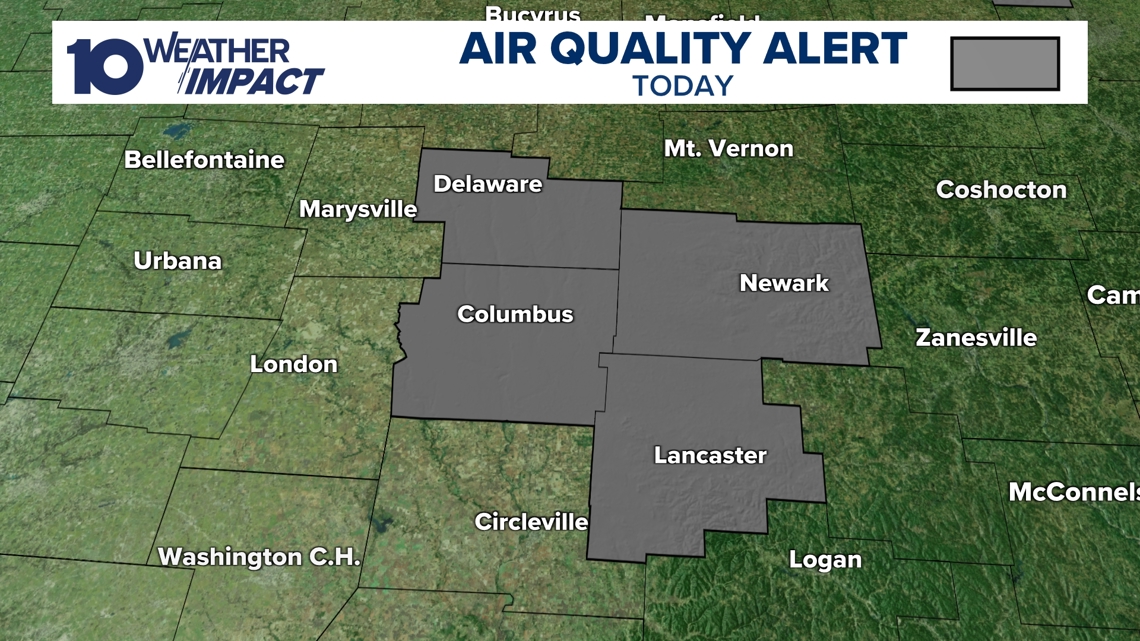
Sustainable Development Goals (SDGs) and Air Quality in Colorado
Several Front Range counties in Colorado received a failing grade on the American Lung Association’s air quality report card last week, highlighting the urgent need to address air pollution in the state. This comes as state lawmakers are backing off regulations for the fossil fuel industry. However, Governor Jared Polis and the state’s top two Democratic lawmakers, Senate President Steve Fenberg and House Speaker Julie McCluskie, recently announced a deal with the oil and gas industry and environmental advocates to raise money for public transit and increase air quality regulations. This agreement aligns with the Sustainable Development Goals (SDGs), particularly Goal 11: Sustainable Cities and Communities, Goal 13: Climate Action, and Goal 15: Life on Land.
Colorado’s Failing Grades on Air Quality
The American Lung Association’s report card revealed that Larimer, Weld, Boulder, and Denver counties all received failing grades for both ozone and particle pollution. These counties experienced numerous days last year when poor air quality made it unsafe for vulnerable populations to go outside. The persistent poor air quality in Colorado’s Front Range has been a long-standing issue, particularly with high levels of ozone pollution. The region has struggled for decades to meet EPA standards for ground-level ozone pollution.
Negotiating Air Quality Measures
Addressing air quality issues in the Front Range has been a priority for state lawmakers. Earlier this year, they introduced a package of bills aimed at implementing aggressive new regulations on fossil fuel producers. However, the fossil fuel industry responded by filing ballot measures that conflicted with state policy. In the recent compromise, all parties agreed to abandon their respective proposals and instead focus on new legislation that can be supported by everyone. This compromise includes two bills: one that imposes a new fee on every barrel of oil produced in Colorado, with a portion of the funding dedicated to transit projects and conservation; and another bill that sets emission reduction goals for the oil and gas industry, strengthens enforcement mechanisms, addresses the disproportionate impacts of air pollution on communities, and funds efforts to cap abandoned oil and gas wells.
Why the Air Quality Deal Matters for Your Health
The negotiations and resulting legislation have a direct impact on the well-being of Coloradans. Both ozone and particle pollution have significant negative effects on human health. Ozone can inflame the lungs and worsen respiratory diseases such as asthma and chronic obstructive pulmonary disease (COPD). Studies have also shown a direct link between bad air quality days and hospitalizations for cardiovascular diseases. Particle pollution, on the other hand, can affect various parts of the body, including the lungs, heart, brain, and reproductive system. It has been linked to adverse birth outcomes, such as low birth weight and preterm birth. According to a study published in the Annals of the American Thoracic Society, ozone pollution alone causes deaths and adverse birth outcomes in the Denver Metro area each year.
To mitigate the negative impacts of air pollution, experts recommend avoiding exposure by staying indoors and running an air conditioner during periods of poor air quality. Additionally, state and national leaders must continue regulating polluters and working towards mitigating climate change, as it exacerbates poor air quality. These efforts align with the SDGs, particularly Goal 3: Good Health and Well-being, Goal 11: Sustainable Cities and Communities, Goal 13: Climate Action, and Goal 15: Life on Land.
SDGs, Targets, and Indicators
1. Which SDGs are addressed or connected to the issues highlighted in the article?
- SDG 3: Good Health and Well-being
- SDG 7: Affordable and Clean Energy
- SDG 11: Sustainable Cities and Communities
- SDG 13: Climate Action
2. What specific targets under those SDGs can be identified based on the article’s content?
- SDG 3.9: By 2030, substantially reduce the number of deaths and illnesses from hazardous chemicals and air, water, and soil pollution and contamination.
- SDG 7.2: By 2030, increase substantially the share of renewable energy in the global energy mix.
- SDG 11.6: By 2030, reduce the adverse per capita environmental impact of cities, including by paying special attention to air quality and municipal and other waste management.
- SDG 13.2: Integrate climate change measures into national policies, strategies, and planning.
3. Are there any indicators mentioned or implied in the article that can be used to measure progress towards the identified targets?
- Number of days with poor air quality that is unsafe for sensitive populations (indicator for SDG 3.9)
- Percentage of energy generated from renewable sources (indicator for SDG 7.2)
- Levels of ozone and particle pollution in specific counties (indicator for SDG 11.6)
- Reduction in nitrogen oxides emissions from the oil and gas industry (indicator for SDG 13.2)
Table: SDGs, Targets, and Indicators
| SDGs | Targets | Indicators |
|---|---|---|
| SDG 3: Good Health and Well-being | Target 3.9: By 2030, substantially reduce the number of deaths and illnesses from hazardous chemicals and air, water, and soil pollution and contamination. | Number of days with poor air quality that is unsafe for sensitive populations. |
| SDG 7: Affordable and Clean Energy | Target 7.2: By 2030, increase substantially the share of renewable energy in the global energy mix. | Percentage of energy generated from renewable sources. |
| SDG 11: Sustainable Cities and Communities | Target 11.6: By 2030, reduce the adverse per capita environmental impact of cities, including by paying special attention to air quality and municipal and other waste management. | Levels of ozone and particle pollution in specific counties. |
| SDG 13: Climate Action | Target 13.2: Integrate climate change measures into national policies, strategies, and planning. | Reduction in nitrogen oxides emissions from the oil and gas industry. |
Copyright: Dive into this article, curated with care by SDG Investors Inc. Our advanced AI technology searches through vast amounts of data to spotlight how we are all moving forward with the Sustainable Development Goals. While we own the rights to this content, we invite you to share it to help spread knowledge and spark action on the SDGs.
Fuente: ksut.org

Join us, as fellow seekers of change, on a transformative journey at https://sdgtalks.ai/welcome, where you can become a member and actively contribute to shaping a brighter future.






